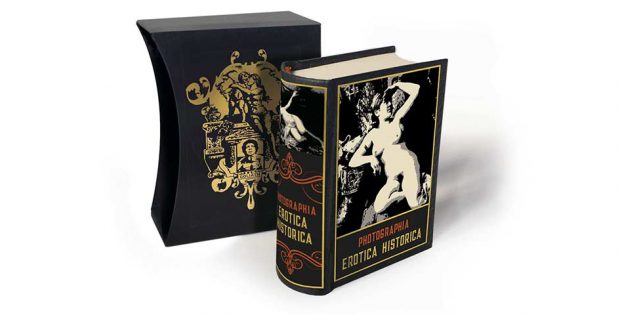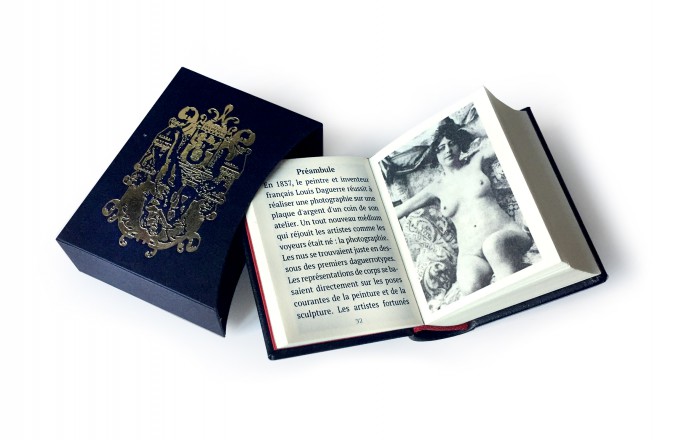
Goliath Books releases Photographia Erotica Historica Miniature Book
„Photographia Erotica Historica“, a leather-bound miniature book with over 380 pages, gold embossed, and filled with photographic “obscenities” from the turn of the century has been published by Goliath Books. A unique, erotic collection of the best book arts. Reminiscent of times when printed nudity still had to be hidden, which may be the case again soon.
A miniature book is a very small book, sized no larger than 3 inches in height. These books became more popular in the last few decades of the 19th century because they were portable and easy to hide. Many are bound in fine leather, gilt and contain excellent examples of woodcuts, etchings, or watermarks. Subjects range from the Bible, encyclopedias, stories, and of course to the desired miniaturization of eroticas. Many are now collectors’ items, with prices ranging from a few hundred to many thousands of US dollars. The book (ISBN: 978-3-95730-033-1) has a retail price of €49,99.

In 1837, the French painter and inventor Louis Daguerre managed to take a photograph of the corner of his studio on to a silver plate. A new medium, that similarly delighted artists like Voyeurs, was born: photography.
Some of the first daguerreotypes included nudes pictures. The body images linked directly to the popular poses in paintings and sculptures. Well-off artists in particular were amongst the first owners of the, for then, expensive and rare cameras. While they began experimenting with the creative possibilities, many of their pupils and less well-off colleagues used the cheaper nude photos in preference to nude models.
A whole new market was quickly discovered with these photos, which constantly demanded new images of real people. Many “art lovers” were interested in the photographic models that depicted naked women. To this day, purchasing erotic and pornographic photographs for “academic purposes” is a familiar expression and popular alibi for collectors and consumers.
The invention of the wet-collodion process in 1851 enabled numerous prints of a single negative for the first time. This made it affordable for consumers and more profitable for merchants, creating a new storm for these “objects of desire”. Many photographers barely managed to keep up with producing new images.
That changed at the end of the 19th century with the introduction of the more affordable and simpler to use Kodak camera. Particularly George Eastman’s invention of the roll film, which simplified taking numerous pictures consecutively, led to an increase in the number of purely erotic images.
These so-called “obscenities” were mostly produced under pseudonyms, which is the reason why most of the original producers of erotic and pornographic photographs remain unknown today. The models required for the images were often found in the red-light districts.
Naturally, the state tried to ban the production and distribution of such content. However, the triumph of photography and of film as a mass medium led to a change in societies’ perception of nudity in many countries in the western world. The result was a liberal and enlightened interaction with erotic or pornographic content.
Worryingly, this development of tolerance and liberality seems to be reversing thanks to resurging religious and conservative movements (be they from the left or right). The start of the 21st century also marks the start of the resurgence of censorship. That is why it is our pleasure and task to publish this little book, which is easy to hide in public, as an entertaining reminder of a repressive time in which nudity was still hidden.





